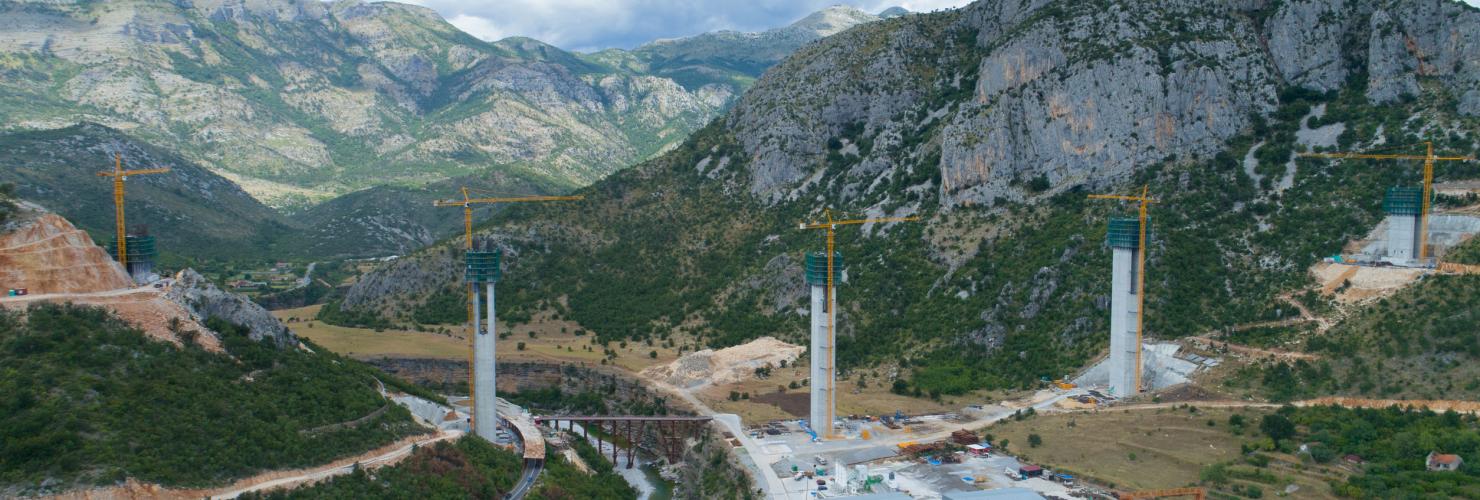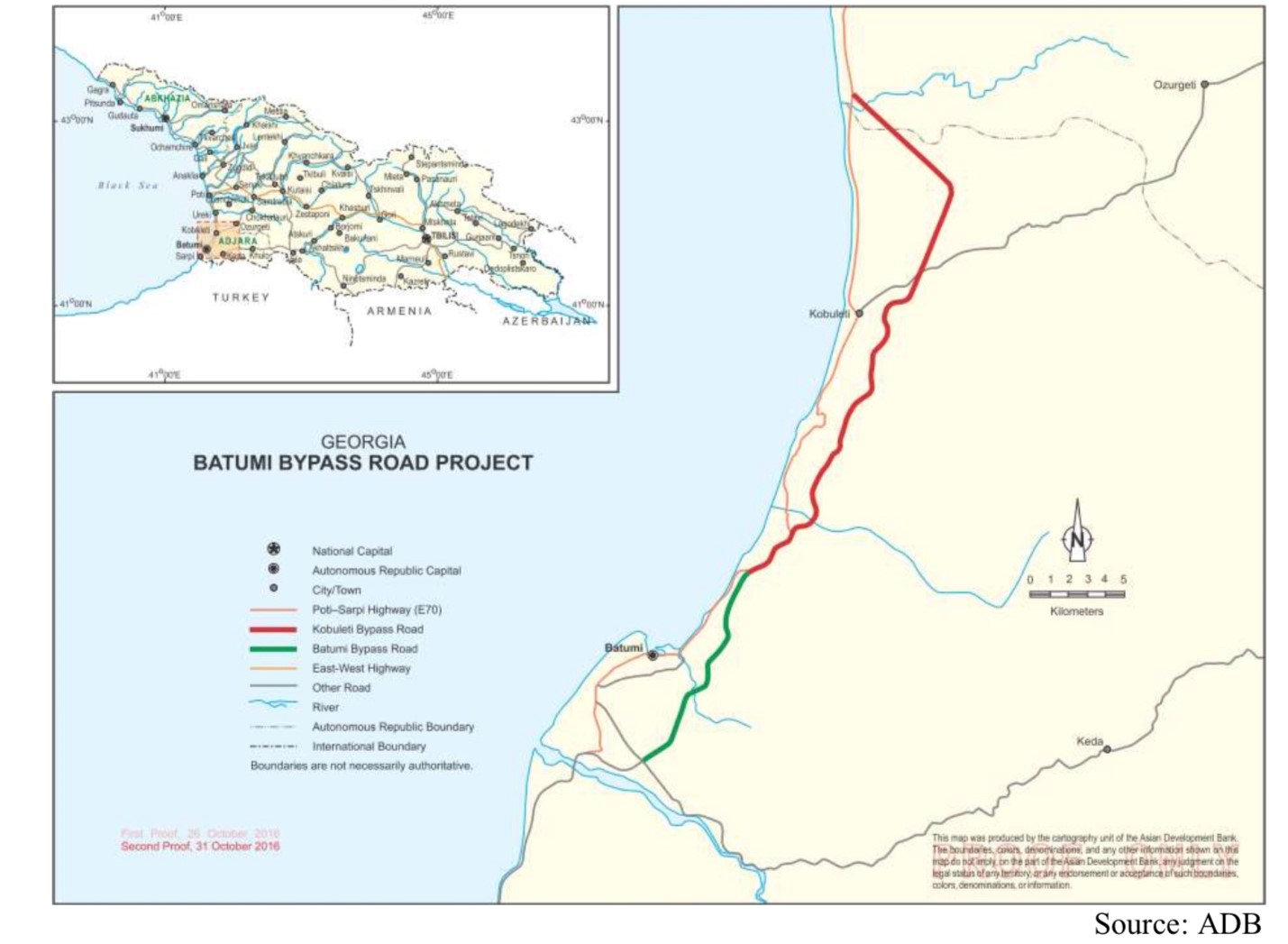The European Belt & Road: Railways, Roads & Ports That EU Investors Should Be Examining For Post-Completion Investment Opportunities
Op/Ed by Chris Devonshire-Ellis

China’s Belt & Road Initiative officially kicked off in 2013, some seven years ago, under the initial title of ‘One Belt One Road’. That was later dropped as it became apparent that the scale of demand for projects would be rather more than single Eurasian and Maritime routes. While there has been some controversy over China’s financing and exporting of its construction SOEs to build these projects, many are now in the final stages of completion.
These include roads and highways within the sphere of influence of the European Union, either because they connect with various EU countries to the Union’s eastern and southern borders or because they are within the EU’s geo-political sphere and relatively nearby. While Brussels has not always been especially welcoming of Chinese funded infrastructure build close to its borders, the fact remains that these projects, now coming to fruition offer EU investors the ability to get involved by exploiting that same infrastructure – now ready. This includes property investments, transportation, waste and water management, power, and especially catering for human needs such as restaurants, catering, computer services, tourism and business services and so on.
We can examine the following Belt & Road Initiative projects that are about to reach maturity in or close to the European Union as follows:
The Budapest-Belgrade High Speed Railway

The Budapest–Belgrade railway connects the capital cities of Hungary and Serbia – Budapest’s Keleti railway station (pictured) with the new Belgrade Centre railways station. It is a €2.44 billion, 350 km high-speed rail line project, and the first stage of the planned Budapest-Belgrade-Skopje-Athens Railway, which would connect Central and Southeast Europe by rail for the first time. This has specific future benefits for Greece, whose Chinese operated port in Piraeus has the potential to be a major hub for goods arriving to and from China and into Europe’s heartland.
The project is actually an upgrade of the outdated railway network between Belgrade and Budapest. With high speed trains, the travel time should decrease from the existing eight hour journey to three and a half. From Belgrade, the route will head south across Serbia to the city of Nis, the country’s third largest and close to the borders with Bulgaria to the East and Macedonia to the south. Both the Budapest-Belgrade and Belgrade-Nis stretches of the route are scheduled to be completed by early 2023.

Bilateral trade between Hungary and Serbia was €1.76 billion euros in 2019 and has an upwards trend – increasing by 8.37% in Q1 2020 despite the Covid-19 situation. This is due in part to the Hungarian Government’s €137 million Vojvodina Economic Development Programme, which is designed to boost Hungarian-Serbian trade and is targeting 6,500 SME’s in farming, tourism and commerce with the neighbouring Vojvodina region of Serbia.
Concerning the route through to Athens, this has been constantly delayed by EU investigations into possible violations of its public tendering requirements and has lead to tensions between Brussels, the beneficiary nations, and China. However, the Budapest-Belgrade-Nis route should be operational two years from now. Opportunities await for all businesses involved with passenger travel and the increasing cross-border import-export opportunities between Hungary and Serbia, from hotels and shops to tourism and trade.
The Serbia-Montenegro (Belgrade to Bar) Motorway

Sticking with Serbia, China is also funding and is building part of the Belgrade-Bar Motorway, which runs due south into Montenegro. Bar is Montenegro’s primary seaport and is on the Adriatic, across the sea from Italy. Works on the motorway originally began in Serbia in 2008, but costs and difficulties in constructing the route through the mountainous Montenegrin section delayed progress while discussions took place with a variety of Chinese contractors. The Montenegrin part of motorway will be 164 km long, and by far the most expensive one, with an estimated cost of around €2 billion. The rugged mountainous terrain is an engineering challenge, with 50 tunnels and 95 bridges and viaducts planned along the section. It is expected to be partially open in early 2021.

Italy, Montenegro and Serbia are lobbying to list the route with the EU as a Pan-European Corridor, and it is frequently referred to as part of proposed Corridor XI, or 4B – an envisioned ferry/motorway corridor linking Bari in Italy with Bar, Belgrade and Romania’s Bucharest. Opportunities exist, arriving in stages as the route is increasingly completed, from Belgrade all the way through into Montenegro. These include the usual traveler facilities as well as property investment potential along strategic towns across the entire route.
Georgia – The Batumi Black Sea Bypass

The Batumi Bypass is an AIIB and ADB financed motorway project that will better connect and facilitate traffic to and around the Black Sea port and resort of Batumi on Georgia’s west coast. The project will construct a new two-lane 14.3 km long highway to provide a bypass to Batumi (the second largest city in Georgia). The road passes through a number of mountainous settlements and due to hilly nature of the terrain, requires the construction of five tunnels and 19 bridges over numerous rivers and valleys.
The project road, which will ring around the city of Batumi to the east, is entirely located in Khelvachauri District and follows a new alignment through densely populated areas.
This project promotes economic growth through infrastructure investment in Georgia. It will support tourism development and enhance regional connectivity and trade.

Additional benefits include improved efficiency for road transport along the East-West Highway in Georgia towards the capital, Tbilisi. Drivers diverting to the Batumi Bypass Road will benefit from faster, smoother travel. Drivers continuing to use the existing road will benefit from reduced travel time, lower cost of transportation, reduced congestion and shorter shipment time for imported and exported agricultural products.
Built at a cost of some €266 million, the route should be open in 2023 and will bring opportunities in the Black Sea tourism, agriculture and fisheries support service sectors such as storage and processing, as well as property investment potential.
Israel – Haifa Port Bay Terminal

The Port of Haifa is the largest of Israel’s three major international seaports, having a natural deep-water harbour serving both passenger and merchant ships. It is one of the largest ports in the eastern Mediterranean in terms of freight volume and currently handles about 30 million tons of cargo per year.
However, extensive reclamation of an area northeast of the mouth of the Kishon River will enable the construction of a large new terminal to be named the “Bay Terminal” that will be capable of handling giant container ships carrying more than 15,000 TEUs each. This development includes:
- Extension of the main breakwater by 880 metres and construction of a new secondary breakwater.
- A new fuels terminal
- Expansion of the existing chemicals terminal.
- A dedicated freight railway terminal on the grounds of the new shipping terminal, as well as connecting the adjacent Israel Shipyards facilities to the rail network.
The new container terminal is being built by the Israeli construction firms Ashtrom and Shapir Marine & Civil Engineering and is due to open in 2021. Shanghai International Port Group (SIPG) won an international tender to operate the new terminal for a period of 25 years once it is completed.
In its initial phase the Bay Terminal will be capable of handling 800,000 TEU container movements annually and planned future expansions to the terminal could handle up to an additional 700,000 TEU.
Chinese management is now developing Haifa into one of the Mediterranean’s largest Container Ports, with engineering teams, working under Chinese supervision, currently setting up the infrastructure for crane and rail systems that are due to arrive shortly from China. Other teams are completing the electrical, communications and safety systems, as well as the high-tech software and sensors that will control operations of advanced automation equipment to be delivered in the coming months, mostly from Chinese suppliers.
Opportunities exist in logistics and port, and rail operational services and the on-going services support that the additional employees working at the Bay Terminal will require. Property prices in the surrounding area will also increase.
Cashing In On China’s Belt & Road: Exploit The Infrastructure
With China’s BRI infrastructure projects now reaching or close to completion, China’s construction SOE’s are now packing their bags and toolkits and moving to look at other opportunities elsewhere. In some cases, such as in Haifa, they will manage the facility. In others they may retain a small equity position, and in yet more, purely depart.
This leaves the way open for foreign investors to invest in the built infrastructure and exploit that. How this is done depends upon your business specifics; however in all the cases shown above, both human and vehicular traffic will increase and these will all need to be catered for. There are also opportunities to park money into property – prices of commercial and residential real estate are likely to increase rapidly once the infrastructure starts to be used and demand jumps. These opportunities exist now. And that means now is the time to be conducting the relevant research and evaluating where your business can succeed in these newly created markets.
See also:
Related Reading
- Belt And Road Initiative Negativity Now In The Past As Debt Trap Burdens Are Debunked And Global Investors Can Look To Opportunity Returns
- Submitting Trademark Registrations Along The Belt & Road Initiative
- China’s Belt And Road Initiative: All Participating Countries By Income Group
About Us
Silk Road Briefing is written by Dezan Shira & Associates. The firm has 28 offices throughout Asia, and assists foreign investors into the region. For strategic advisory and business intelligence issues please contact the firm at silkroad@dezshira.com or visit www.dezshira.com






